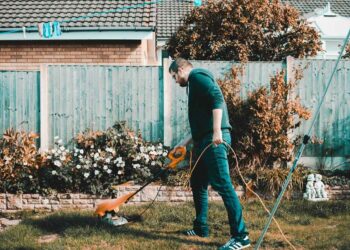Birding, also known as birdwatching, is a rewarding and immersive hobby that connects people with nature while fostering an appreciation for the diverse and fascinating world of birds. Whether you’re a beginner or an experienced enthusiast, birding offers endless opportunities to explore the outdoors, learn about avian species, and contribute to conservation efforts.
This comprehensive guide will walk you through everything you need to know to start and excel in birding, from essential tools and techniques to tips for identifying birds and making the most of your birding adventures.
What is Birding?
Birding is the practice of observing and identifying birds in their natural habitats. It can be as simple as watching birds in your backyard or as adventurous as traveling to remote locations to spot rare species. Birding is not just a hobby; it’s a way to connect with nature, promote mindfulness, and contribute to scientific research through citizen science initiatives like eBird and the Christmas Bird Count.

Why Take Up Birding?
Birding offers numerous benefits, both personal and environmental. It encourages outdoor activity, reduces stress, and enhances your knowledge of wildlife and ecosystems. Additionally, birding fosters a sense of community, as birders often share their sightings and experiences with others. On a larger scale, birding contributes to conservation efforts by raising awareness about endangered species and habitat preservation.
Essential Tools for Birding
To get started with birding, you’ll need a few basic tools. These will help you observe, identify, and document birds more effectively.
- Binoculars: A good pair of binoculars is the most important tool for birding. Look for binoculars with a magnification of 8x or 10x and an objective lens diameter of 42mm for optimal clarity and brightness. Compact binoculars are also available for portability.
- Field Guide: A field guide is a book or app that provides information about bird species, including their appearance, behavior, and habitat. Popular field guides include the Sibley Guide to Birds and the National Geographic Field Guide to the Birds of North America. Apps like Merlin Bird ID and Audubon Bird Guide are also excellent digital resources.
- Notebook and Pen: Keeping a journal of your sightings helps you track the birds you’ve observed and note their behaviors, locations, and any unique characteristics. Over time, this journal becomes a valuable record of your birding journey.
- Smartphone or Camera: A smartphone or camera with a zoom lens can help you capture photos of birds for identification and documentation. Many birders also use their phones to record bird calls and songs.
- Clothing and Gear: Wear comfortable, weather-appropriate clothing in neutral colors to blend into your surroundings. A hat, sunscreen, and insect repellent are also essential for outdoor birding. If you plan to bird in rugged terrain, sturdy hiking boots are a must.

Birding Techniques and Tips
Birding requires patience, observation, and a bit of strategy. Here are some techniques and tips to enhance your birding experience:
- Learn Bird Anatomy and Behavior: Familiarize yourself with bird anatomy, such as the differences between beaks, wings, and tails. Understanding bird behavior, such as feeding habits and mating rituals, can also help you identify species more easily.
- Listen for Bird Calls and Songs: Birds are often heard before they are seen. Learning to recognize bird calls and songs is a valuable skill. Apps like Merlin Bird ID can help you match sounds to specific species.
- Use the “Birding by Habitat” Approach: Different birds inhabit different environments. Research the habitats of the birds you want to observe, such as forests, wetlands, or grasslands, and visit those areas accordingly.
- Practice Stealth and Patience: Move slowly and quietly to avoid startling birds. Use natural cover, such as trees or bushes, to conceal yourself. Patience is key, as birds may take time to appear.
- Join Birding Groups and Events: Birding with others can be a fun and educational experience. Join local birding clubs, participate in bird walks, or attend birding festivals to learn from experienced birders.
Identifying Birds When Birding
Identifying birds can be challenging, especially for beginners. Here are some key features to look for when trying to identify a bird:
- Size and Shape: Note the bird’s overall size and shape, including the length of its wings, tail, and legs. Compare it to familiar birds to gauge its size.
- Color and Markings: Observe the bird’s color patterns, including its plumage, beak, and eye color. Look for distinctive markings, such as stripes, spots, or patches.
- Behavior: Pay attention to how the bird moves, feeds, and interacts with its environment. For example, woodpeckers cling to tree trunks, while swallows swoop through the air to catch insects.
- Habitat: Consider where the bird is located. Some species are found only in specific habitats, such as wetlands, deserts, or forests.
- Voice: Listen to the bird’s calls and songs. Many species have unique vocalizations that can aid in identification.
People also read: Why you need baby monitors for your baby’s safety
Birding Etiquette
Respecting birds and their habitats is a fundamental principle of birding. Follow these guidelines to ensure ethical and responsible birding:
- Avoid Disturbing Birds: Keep a safe distance from birds and their nests. Use binoculars or a zoom lens to observe them without causing stress or harm.
- Stay on Trails: Stick to designated paths to minimize your impact on the environment and avoid trampling vegetation.
- Do Not Use Recorded Bird Calls: Playing recorded bird calls to attract birds can disrupt their natural behavior and cause unnecessary stress.
- Respect Private Property: Always seek permission before birding on private land.
- Support Conservation Efforts: Contribute to bird conservation by participating in citizen science projects, donating to conservation organizations, and advocating for habitat protection.

Making the Most of Your Birding Experience
- Set Goals: Create a list of birds you want to see, such as local species, migratory birds, or rare sightings. This can motivate you to explore new areas and improve your skills.
- Travel for Birding: Visit birding hotspots, such as national parks, wildlife refuges, and bird sanctuaries. International destinations like Costa Rica, Kenya, and Australia offer incredible birding opportunities.
- Photograph Birds: Bird photography adds an artistic dimension to birding. Invest in a good camera and practice capturing birds in their natural habitats.
- Educate Yourself: Read books, watch documentaries, and attend workshops to expand your knowledge of birds and their ecosystems.
- Share Your Passion: Introduce others to birding by organizing outings or sharing your sightings on social media. Inspiring others to appreciate birds can have a positive impact on conservation efforts.
Birding is a fulfilling and enriching hobby that allows you to connect with nature, learn about the avian world, and contribute to conservation. With the right tools, techniques, and mindset, anyone can become a skilled birder.
Whether you’re observing a robin in your backyard or spotting a rare species in a distant land, birding offers endless opportunities for discovery and wonder. So grab your binoculars, step outside, and let the world of birds inspire you!
You missed these posts
All-Inclusive Family Resorts with Water Parks in the United Kingdom
Family holidays are at their best when everything is taken care of; meals, activities, and…
How Many Interior Design Styles Are There?
How many interior design styles are there? It’s a question that sounds simple—until you start…
Is a Good Startup Idea More Important Than Money to Start a Business?
Starting a business is a big dream for many people. But a common question comes…
How Much Money Do You Need to Start a Business From Scratch?
As a new entrepreneur or a seasoned entrepreneur, knowing how much money you need to…
As a Software Expert, This Is the Best Way to Bring Your Software Startup Ideas to Life
What if everything you have always learned about the best way to bring your well-thought-out…
To Create The Best Software Startup Ideas, These Are What You Should Know
If you want to create the best software startup ideas, you need more than just…

































88ibet, you say? I dropped in for a quick flutter a while back. Things were fine, good spread of games, nothing to write home about, but solid. Worth a peep! 88ibet
Another Rummy app! YonoRummyOnline is another fair option for online rummy lovers. Interface is clean. Give it a shot and see if you like what they’ve got: yonorummyonline
Hey everyone! Just checked out alo789topvn. Seems pretty legit, decent selection. Might be worth a look if you’re hunting for something new. Check it out for yourselves alo789topvn!
If you’re looking to place some bets, jl99bet seems like a solid option. Good odds and a fairly user-friendly interface. I’d say give it a shot! Wager away here: jl99bet
I’m more into the sports betting side of things so I tried 68win22 last time, and they had pretty good odds. Worth a look if you’re placing some bets on the games this weekend.: 68win22